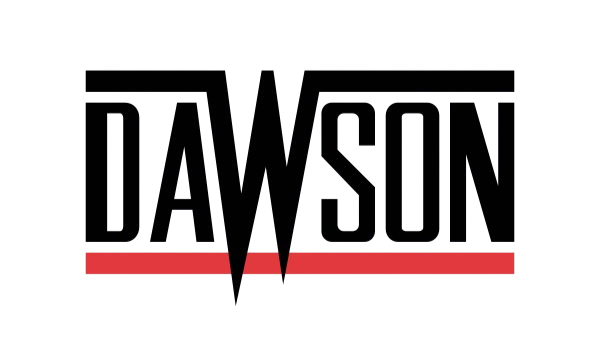
The Psychology of Harness Failures: What Engineers Overlook
In the world of wiring harness manufacturing, engineers pride themselves on precision, process, and performance. Yet despite advancements in materials, testing, and automation, wiring harness failures persist—often with expensive, hazardous, or reputation-damaging consequences.
Why? Because the root causes often lie not in the wire, but in the blind spots of engineering psychology. This blog explores the psychological causes of wiring failures, shedding light on how engineers overlook harness issues due to cognitive biases in harness design, human factors, and mental shortcuts that can quietly compromise reliability.
Understanding these overlooked factors in harness failures is essential not just for preventing failure, but for building resilient, high-reliability harness systems that function flawlessly under real-world conditions. By addressing mental blind spots in harness engineering, we can create safer, smarter systems.
Why This Matters Now
In an era where vehicle electrification, IoT devices, and industrial automation are driving wiring density and complexity, the margin for error is razor-thin. Today’s design teams must account for both the physics of failure and the psychology behind engineering decisions. This article is tailored for B2B decision-makers and OEM engineers sourcing from a custom wiring harness manufacturer like Celestix.
Understanding the Stakes: Why Wiring Harness Failures Matter
A single harness failure can bring down an entire assembly line, disable critical systems in a medical device, or lead to catastrophic safety failures in automotive or aerospace sectors. These aren't theoretical risks—they're active threats in a globally competitive market where quality and trust define success.
Harness failures cost more than money. They erode brand credibility, delay production cycles, trigger warranty claims, and sometimes—especially in mission-critical systems—put lives at risk. The more complex the system, the more devastating the fallout of a harness malfunction.
Visual Reference: The image of a technician working inside a car console, surrounded by exposed harnesses and connectors, serves as a clear reminder of how field conditions—tight spaces, ergonomic limitations, and time pressure—can lead to connector failure or insulation damage that wasn’t accounted for during design.
This is why Celestix Industries, an ISO 9001 wire harness and IATF 16949 certified harnesses manufacturer, embeds psychological strategies to prevent failures into our engineering DNA. We don't just design for performance—we design for resilience under pressure.
Real-World Impacts of Psychological Oversight and Human Error
Table: Key Psychological Triggers and Their Harness Design Impact
This table represents the intersection between engineer psychology and harness reliability, highlighting how subtle mental patterns directly contribute to system failure.
To enhance visibility and training impact, these insights are incorporated into:
Design Failure Mode and Effects Analysis (DFMEA) workflows
Engineer onboarding modules featuring case studies of psychological traps
Cross-functional design reviews with bias checklists
Root cause analysis (RCA) processes with a psychological root cause layer
Vendor assessments evaluated for cognitive and behavioral risk drivers
This comprehensive framework ensures that every touchpoint—design, test, sourcing, and assembly—receives both technical and psychological scrutiny. It transforms mental shortcuts into deliberate engineering behavior. At Celestix, we integrate these insights at every level—from design to quality control—to deliver dependable, fail-safe solutions.
When engineers succumb to cognitive shortcuts or systemic biases—whether it's overconfidence in automation or groupthink during design reviews—the consequences are often seen only after failures occur in the field.
Real-World B2B Scenarios:
A misaligned connector on a medical device disables diagnostic sensors during a patient emergency.
In an electric vehicle, unrelieved strain at door hinges causes signal dropouts in side-impact sensors.
A control panel fails due to overlooked EMI shielding, traced back to procurement-driven material substitution.
These failures aren’t just technical—they’re psychological. They emerge from:
Cognitive load under deadline pressure
Anchoring bias during initial prototyping stages
Confirmation bias in test reporting
Groupthink where dissent is culturally suppressed
Risk aversion that discourages design innovation
They are especially common in:
EV wiring harnesses with tight packaging
High-voltage assemblies with complex insulation needs
Medical overmolded cable assemblies require both hygiene and strength
In our experience, many failure investigations trace back not to material flaws, but to human behavior under pressure. This insight shapes our approach to training, process design, and even supplier evaluation.
At Celestix, we:
Embed psychological reviews in the harness design validation
Use mental model mapping in FMEA workshops
Train teams to spot and mitigate bias in reviews
Introduce failure psychology in quality training modules
These outcomes often stem from flawed mental models, rushed decisions, and communication breakdowns within engineering workflows. That’s why at Celestix, we treat mindset and workflow as part of our quality system—not just our tooling.
Mid-Article CTA: Prevent Failures Before They Happen
Ready to eliminate hidden failure risks in your wiring systems?
Celestix applies human-factor insights and world-class manufacturing to deliver fail-safe harnesses.
Get a Quote Now or email info@celestixindustries.com
Celestix’s Proven Capabilities
As a leading custom wiring harness manufacturer in Pune, India, Celestix delivers high-reliability solutions for global OEMs in:
Automotive
Industrial automation
Consumer electronics
Medical equipment
Our value proposition includes:
100% in-process and final QC
IATF 16949, ISO 9001, ISO 14001, ISO 45001 certifications
In-house lab, overmolding, and accelerated lifecycle testing
Scalable capacity with 5–6× annual production growth
Design support for automotive wiring harness, overmolded cable assemblies, and high-voltage wiring harness applications
Flexible volume output – low-batch or high-throughput
Globally shipping from the wire harness manufacturing in India.
Driven by the DRIVE Culture: Dedication, Respect, Integrity, Value, Excellence
Final Word: Build with Both Science and Psychology
Celestix doesn’t just manufacture harnesses—we build systems that integrate technical excellence with human insight. When engineer blind spots are addressed through psychological audits in harness projects, reliability soars.
If you're sourcing for quality, accountability, and insight-driven engineering, Celestix is your partner. Let’s move beyond spec sheets—into more intelligent, safer wiring systems.
Let’s Get to Work
Explore how Celestix can support your next project with end-to-end wiring harness solutions.
Email: info@celestixindustries.com








